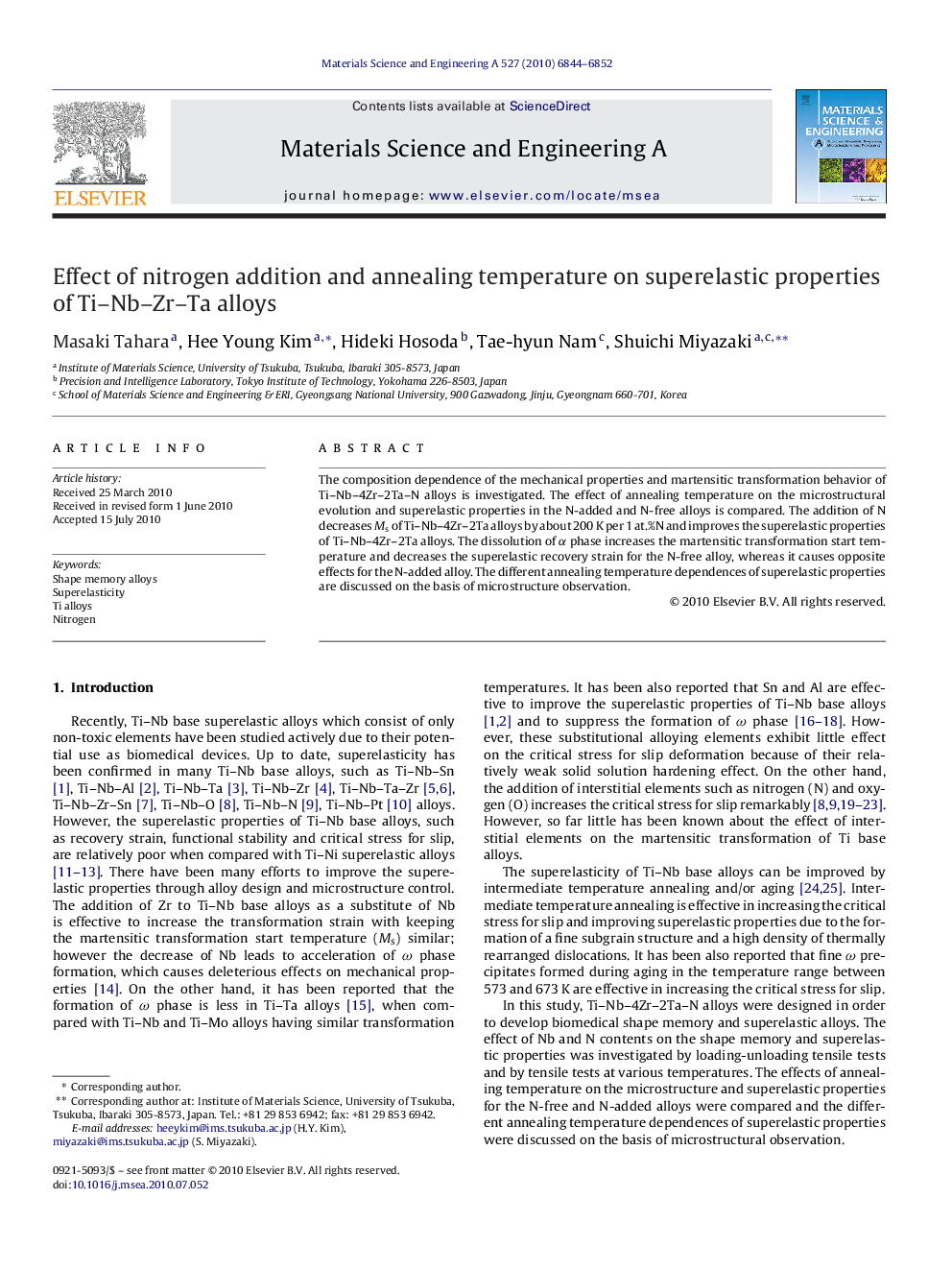| Article ID | Journal | Published Year | Pages | File Type |
|---|---|---|---|---|
| 1579856 | Materials Science and Engineering: A | 2010 | 9 Pages |
The composition dependence of the mechanical properties and martensitic transformation behavior of Ti–Nb–4Zr–2Ta–N alloys is investigated. The effect of annealing temperature on the microstructural evolution and superelastic properties in the N-added and N-free alloys is compared. The addition of N decreases Ms of Ti–Nb–4Zr–2Ta alloys by about 200 K per 1 at.%N and improves the superelastic properties of Ti–Nb–4Zr–2Ta alloys. The dissolution of α phase increases the martensitic transformation start temperature and decreases the superelastic recovery strain for the N-free alloy, whereas it causes opposite effects for the N-added alloy. The different annealing temperature dependences of superelastic properties are discussed on the basis of microstructure observation.
Research highlightsIn this study, the effects of composition and annealing temperature on microstructure, shape memory effect and superelastic properties were investigated in Ti–Nb–4Zr–2Ta–N alloys by measuring stress–strain curves at various temperatures and using transmission electron microscopy. Dissolution of α phase increases Ms and decreases the critical stress for slip for the Ti–22Nb–4Zr–2Ta alloy while it causes the decrease of Ms and the increase of the critical stress for slip for the Ti–20Nb–4Zr–2Ta–0.6N alloy. The different effect of dissolution of α phase can be attributed to the fact that N is absorbed in α phase.
